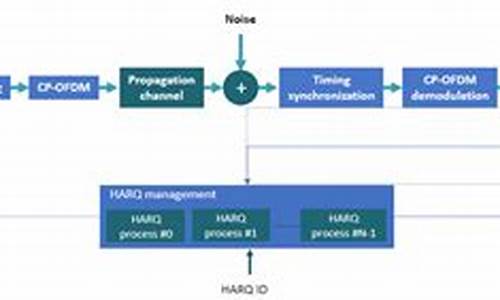1.如何在matlab里提取bode数据?
2.求 matlab 中bode源代码
3.matlab中phase与angle的区别
4.matlab画幅角图的方法?
5.Matlab中信号经FFT后的相位谱表达式p1=mod(phase(y)*180/pi,360)是什么意思,求详细解释

如何在matlab里提取bode数据?
在matlab 提取bode图数据如下:1丶我们现在matlab里面编写好自己要绘制图形的代码。
2丶在代码后面加上[mag,phase,w] = bode(sys);
3丶这时候我们在workplace界面就可以看到我们需要的数据了。
这样就解决了在matlab 提取bode图数据的问题。
求 matlab 中bode源代码
function [magout,phase,w] = bode(a,b,c,d,iu,w)
%BODE Bode frequency response of LTI models.
%
% BODE(SYS) draws the Bode plot of the LTI model SYS (created with
% either TF, ZPK, SS, or FRD). The frequency range and number of
% points are chosen automatically.
%
% BODE(SYS,{ WMIN,WMAX}) draws the Bode plot for frequencies
% between WMIN and WMAX (in radians/second).
%
% BODE(SYS,W) uses the user-supplied vector W of frequencies, in
% radian/second, at which the Bode response is to be evaluated.
% See LOGSPACE to generate logarithmically spaced frequency vectors.
%
% BODE(SYS1,SYS2,...,W) graphs the Bode response of multiple LTI
% models SYS1,SYS2,... on a single plot. The frequency vector W
% is optional. You can specify a color, line style, and marker
% for each model, as in
% bode(sys1,'r',sys2,'y--',sys3,'gx').
%
% [MAG,PHASE] = BODE(SYS,W) and [MAG,PHASE,W] = BODE(SYS) return the
% response magnitudes and phases in degrees (along with the frequency
% vector W if unspecified). No plot is drawn on the screen.
% If SYS has NY outputs and NU inputs, MAG and PHASE are arrays of
% size [NY NU LENGTH(W)] where MAG(:,:,k) and PHASE(:,:,k) determine
% the response at the frequency W(k). To get the magnitudes in dB,
% type MAGDB = *log(MAG).
%
% For discrete-time models with sample time Ts, BODE uses the
% transformation Z = exp(j*W*Ts) to map the unit circle to the
% real frequency axis. The frequency response is only plotted
% for frequencies smaller than the Nyquist frequency pi/Ts, and
% the default value 1 (second) is assumed when Ts is unspecified.
%
% See also BODEMAG, NICHOLS, NYQUIST, SIGMA, FREQRESP, LTIVIEW, LTIMODELS.
% Old help
%warning(['This calling syntax for ' mfilename ' will not be supported in the future.'])
%BODE Bode frequency response for continuous-time linear systems.
% BODE(A,B,C,D,IU) produces a Bode plot from the single input IU to
% all the outputs of the continuous state-space system (A,B,C,D).
% IU is an index into the inputs of the system and specifies which
% input to use for the Bode response. The frequency range and
% number of points are chosen automatically.
%
% BODE(NUM,DEN) produces the Bode plot for the polynomial transfer
% function G(s) = NUM(s)/DEN(s) where NUM and DEN contain the
% polynomial coefficients in descending powers of s.
%
% BODE(A,B,C,D,IU,W) or BODE(NUM,DEN,W) uses the user-supplied
% frequency vector W which must contain the frequencies, in
% radians/sec, at which the Bode response is to be evaluated. See
% LOGSPACE to generate logarithmically spaced frequency vectors.
% When invoked with left hand arguments,
% [MAG,PHASE,W] = BODE(A,B,C,D,...)
% [MAG,PHASE,W] = BODE(NUM,DEN,...)
% returns the frequency vector W and matrices MAG and PHASE (in
% degrees) with as many columns as outputs and length(W) rows. No
% plot is drawn on the screen.
%
% See also LOGSPACE, SEMILOGX, MARGIN, NICHOLS, and NYQUIST.
% J.N. Little --
% Revised A.C.W.Grace 8--, 2-4-, 6--
% Revised Clay M. Thompson 7-9-
% Revised A.Potvin -1-
% Copyright - The MathWorks, Inc.
% $Revision: 1.1.8.2 $ $Date: // :: $
ni = nargin;
no = nargout;
% Check for demo and quick exit
if ni==0,
eval('exresp(''bode'')')
return
end
error(nargchk(2,6,ni));
% Determine which syntax is being used
switch ni
case 2
if size(a,1)>1,
% SIMO syntax
a = num2cell(a,2);
den = b;
b = cell(size(a,1),1);
b(:) = { den};
end
sys = tf(a,b);
w = [];
case 3
% Transfer function form with time vector
if size(a,1)>1,
% SIMO syntax
a = num2cell(a,2);
den = b;
b = cell(size(a,1),1);
b(:) = { den};
end
sys = tf(a,b);
w = c;
case 4
% State space system without iu or time vector
sys = ss(a,b,c,d);
w = [];
otherwise
% State space system, with iu but w/o time vector
if min(size(iu))>1,
error('IU must be a vector.');
elseif isempty(iu),
iu = 1:size(d,2);
end
sys = ss(a,b(:,iu),c,d(:,iu));
if ni<6,
w = [];
end
end
if no==0,
bode(sys,w)
else
[magout,phase,w] = bode(sys,w);
[Ny,Nu,lw] = size(magout);
magout = reshape(magout,[Ny*Nu lw]).';
phase = reshape(phase,[Ny*Nu lw]).';
end
% end bode
matlab中phase与angle的区别
phase
和 angle 在输入为单个标量数据时,没有差别,医院病历系统源码二者都是用 atan2
函数来求输入数据的四象限辐角。但是对于向量或矩阵数据输入时,二者差别非常大。
1.
phase 只支持标量和一维(行、列)向量输入,不支持二维或高维矩阵输入。angle 可以支持标量或任意维数矩阵输入
2.
对于向量输入,phase 会对输出结果做判断,如果相邻两个输出角度的差的绝对值超过 3.5,phase
会对其重新处理,确保相邻两个角度差值的绝对值永远不超过3.5。而 angle
函数对每个数据独立求其辐角,不会因为相邻角度差超出某个数值而做特殊处理。火车票查找源码所以,从这个意义上讲,angle 函数是我们通常需要使用的求角度的函数,而 phase
的特殊处理,会导致得出与angle不同的结果。
下面举例说明。
Example
1: 1维向量
g
= [-1-1i -1+1i];
% 对应角度为 -3*pi/4 (=-2.) 和 3*pi/4 (=-2.)
ang
= angle(g)
pha
= phase(g)
复制代码
输出结果是:
ang
=
-2. 2.
pha
=
-2. -3.
很显然,由于
2.与-2.的差值的绝对值超过了3.5,phase函数的微信名片生成源码处理使得得到的结果并非我们想要的,而angle函数是直接对每个输入数据求角度,不会考虑相邻两个角度的差值大小。所以,angle
求得的是我们需要的
Example
2:2维矩阵
g
= [-1-1i -1+1i; -1-1i -1+1i];
ang
= angle(g)
pha
= phase(g)
复制代码
输出结果是:
ang
=
-2. 2.
-2. 2.
Error
using phase (line )
PHASE
applies only to row or column vectors.
For
matrices you have to decide along which dimension the
phase
should be continuous.
从这个例子可以看出,对于矩阵输入,只有angle函数能正常工作,phase函数无法支持矩阵输入。
综上所述,如果我们对输出角度的matlab中rand的源码差值没有限制,而只是单纯的求输入数据的辐角,我们应该用
angle 函数。所以,对于楼主的代码,最好将 phase 换成 angle 函数。
matlab画幅角图的方法?
可以用MATLAB画伯德图。
有两个函数可以画伯德图
一个是bode函数 格式是[mag,phase,w]=bode(G);
G是构建好的系统,mag是幅值,phase是pdf.js源码剖析幅角,w是频率,如果完整地写[mag,phase,w]=bode(G)
那么将不画图,把幅值,幅角,频率分别一一对应存在三个向量里。只写bode(G)的话,只会画伯德图。用bode函数配合一些查表函数和插值函数,可以比较方便的实现求解对特定频率的增益和相移。
还有一个margin函数,格式是[Gm,Pm,Wcg,Wcp]=margin(G); Gm是幅值裕度,Pm是相角裕度,Wcg是截止频率,Wcp是穿越频率。格式不完整,只写margin(G)的话,会画出伯德图,并将那四个参数标注在图上。
也就是说bode函数可以用来求频率,幅值,幅角的关系,margin函数用来求系统的幅值裕度,相角裕度,截止频率,穿越频率这些参数。这两个联合起来用,正好可以满足LZ的要求。这些函数都是MATLAB自带的,是现成的,不用什么复杂的编程。
Matlab中信号经FFT后的相位谱表达式p1=mod(phase(y)*/pi,)是什么意思,求详细解释
除是因为相位周期是。如果用的取余函数是rem的话就要除。
两者的区别在于进行取余运算时要不要考虑符号。
举个例子,rem(-1,)=-1而mod(-1,)=;mod(-1,)=。很显然,对于相位来说,-1与是等价的,跟半毛钱关系都没有~
2025-01-19 10:42
2025-01-19 10:25
2025-01-19 10:10
2025-01-19 09:45
2025-01-19 08:53
2025-01-19 08:32